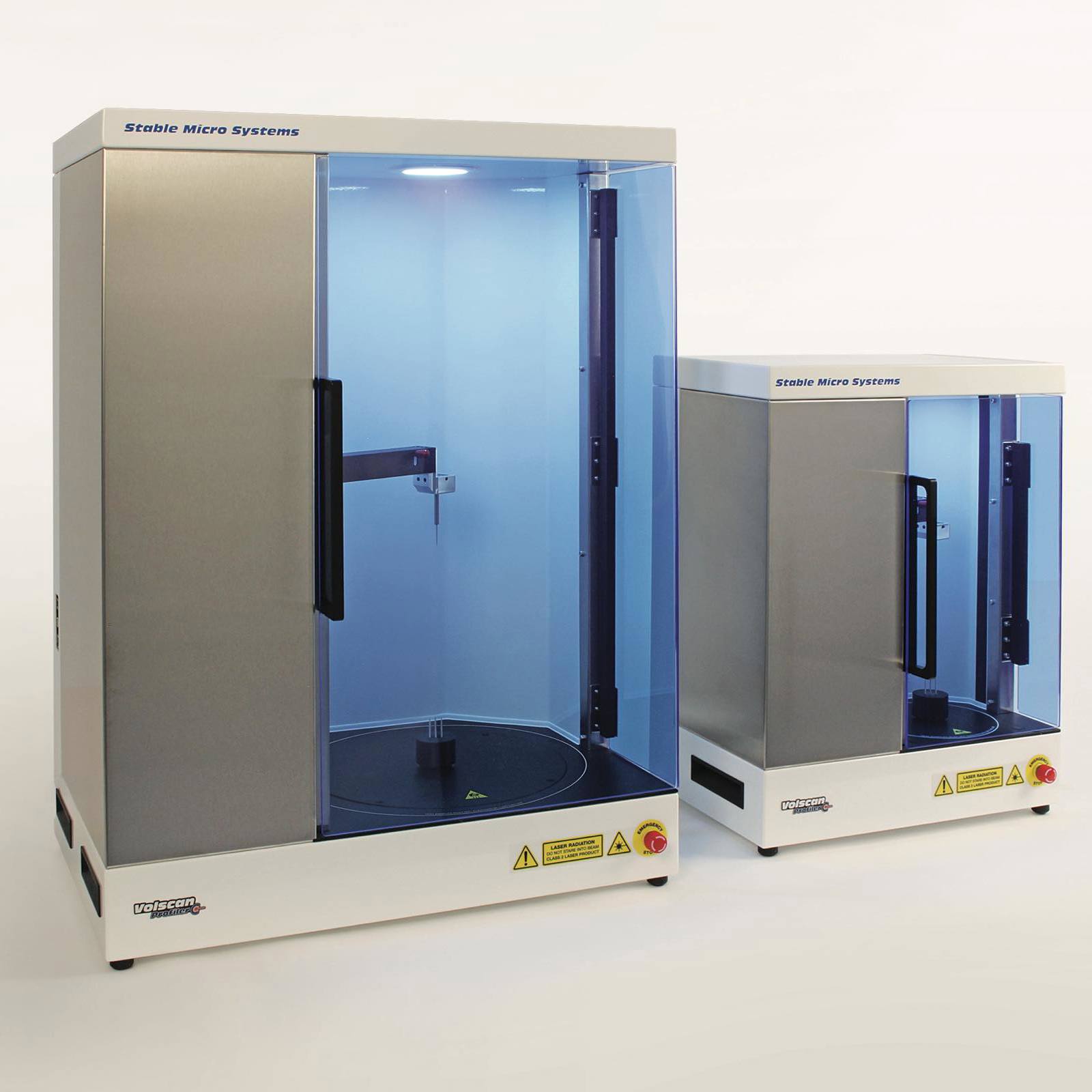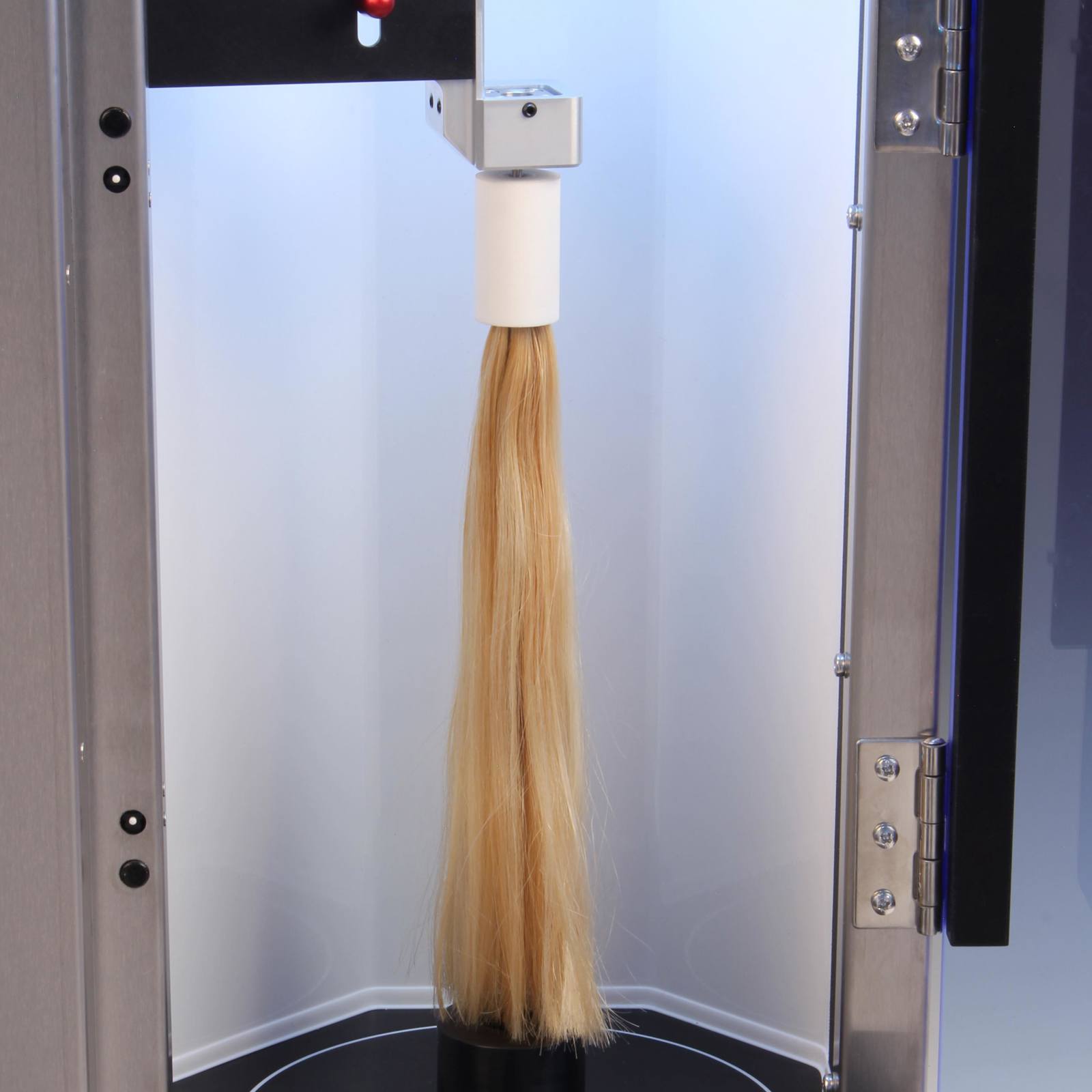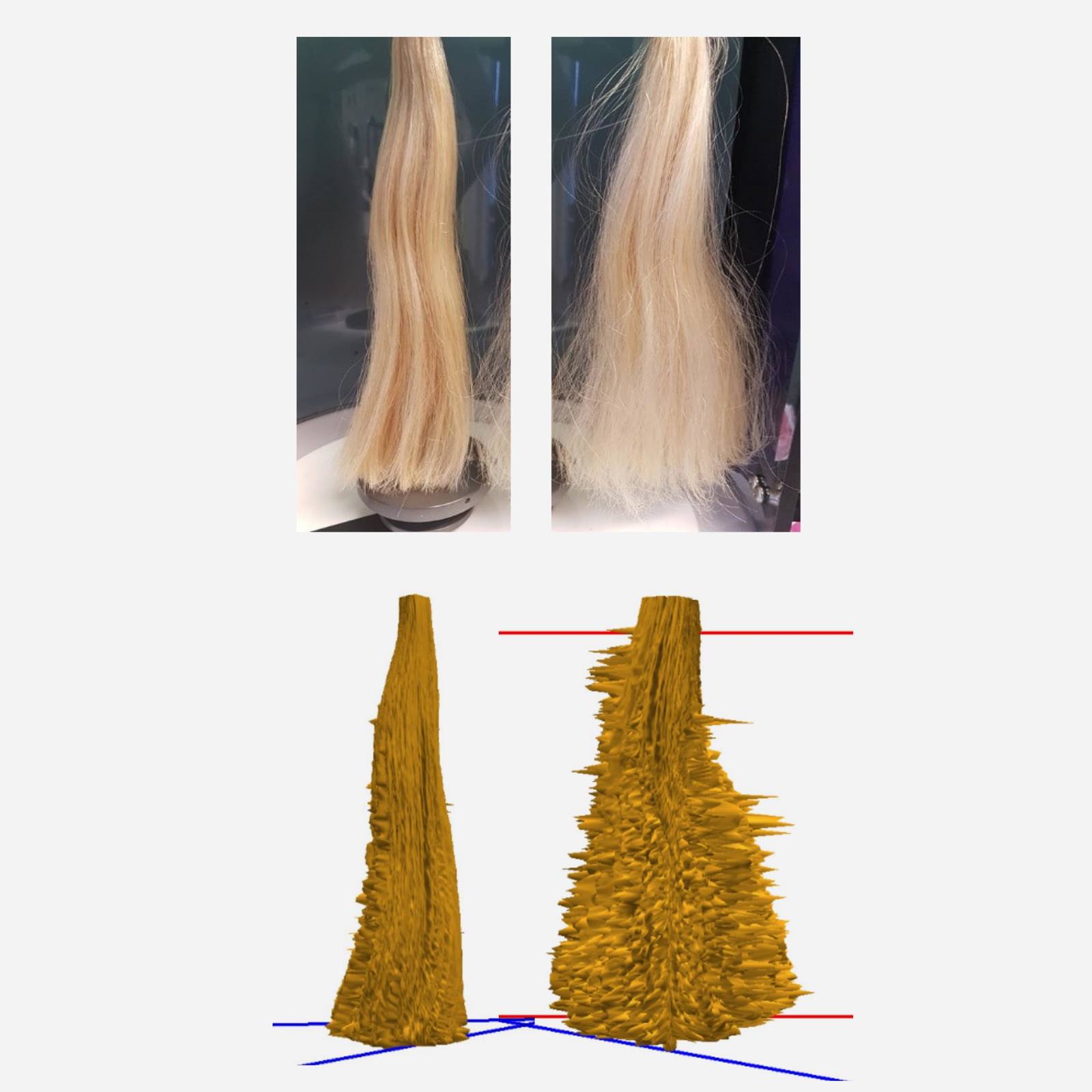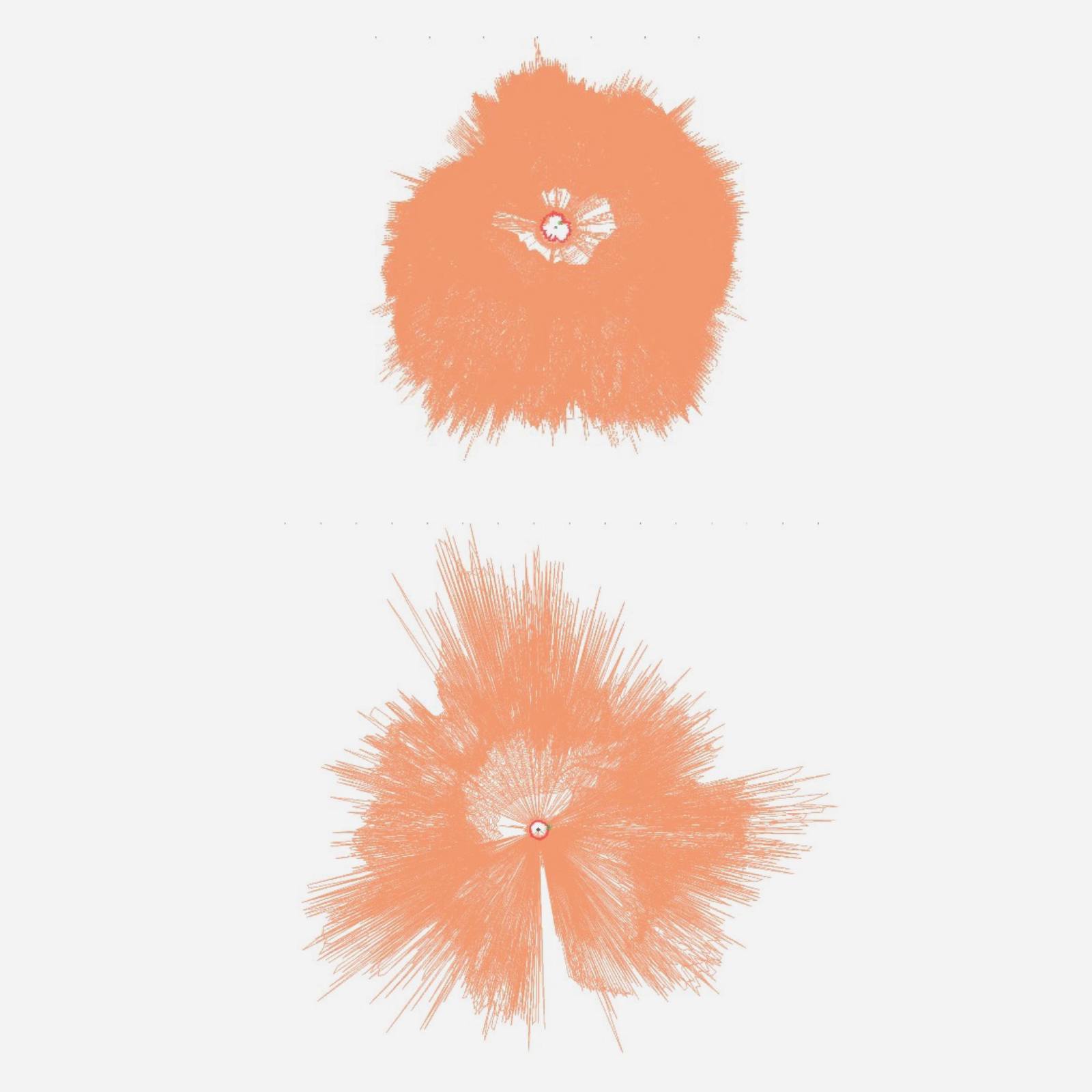
How to measure the physical and dimensional properties of hair – Laser Profiling
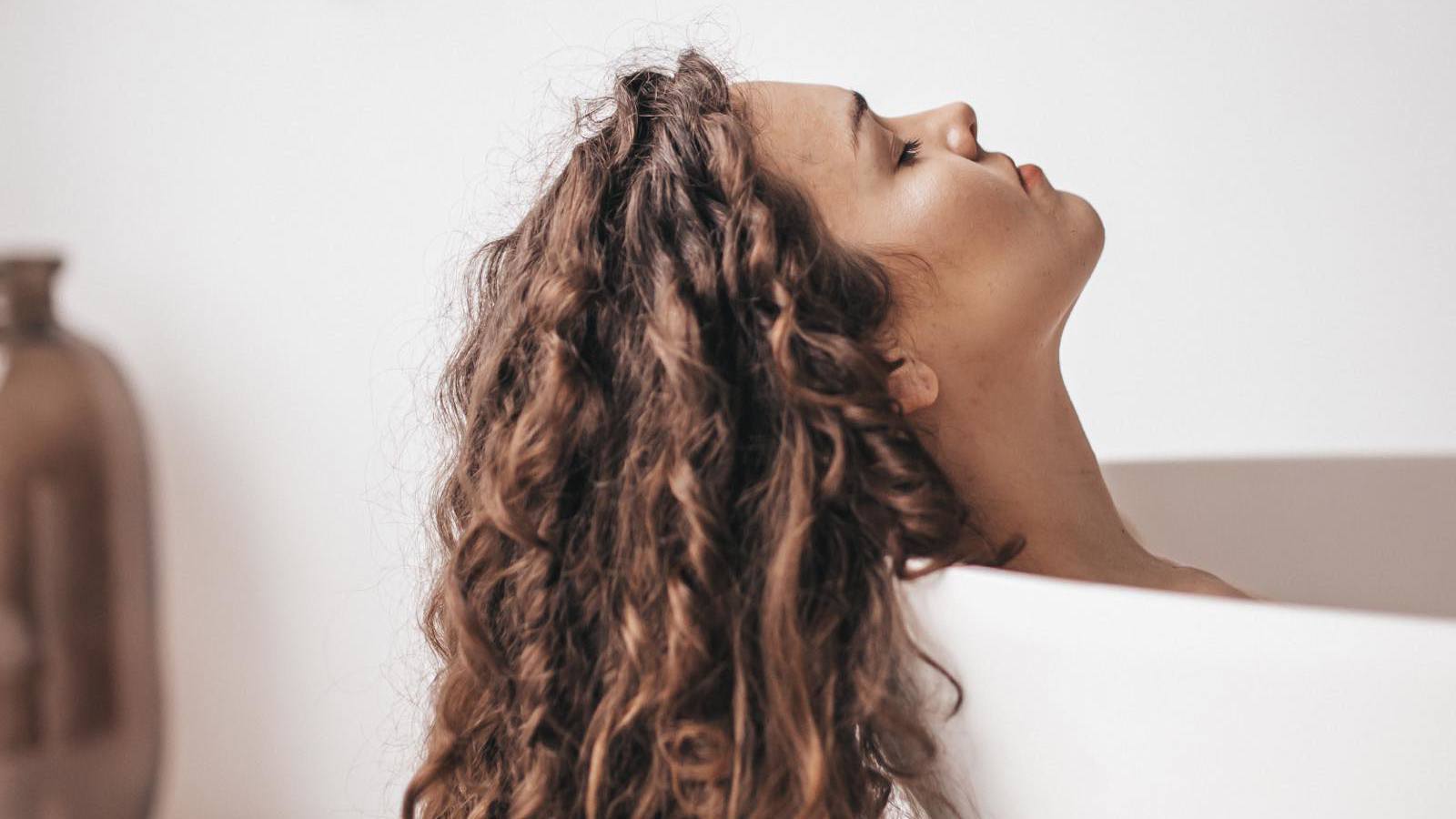
Measurements using the Volscan Profiler
Many products come with claims for enhanced and long-lasting hair body or volume while taming flyaways and frizz. As with any other claim, scientific testing must back it up. Methods to do so include the measurement of the body of a tress sample using a custom made holder (volume, surface area, frizziness and furthest flung hair) and the measurement of a mannequin head (comparison of treatments on each side of the head, root lift and crown volume on each side).
High body follows the loose definition of thick and bouncy hair with high volume and much movement when the head is turned. It may also be defined as hair with good elevation from the scalp in both the vertical and lateral directions.
Previous methods of hair body measurement fall into four main categories:
- Digital image processing of backlit hair swatches (sometimes swatches are turned while being photographed – images are processed to separate ‘bulk’ and ‘frizz’)
- Laser stereometry of a static tress
- Dynamic tests, during which a tress is swung side to side and the height reached is measured
- Manual measurements of tress or mannequin head samples using Vernier callipers
Performing a hair body measurement in the Volscan Profiler combines the movement of dynamic testing with the laser measurement feature of laser stereometry and the flexibility of manual calliper measurements with a considerably reduced analysis time.
Laser profiling – tresses
Hair tress samples are widely used in the hair industry as they provide a controlled sample mass in a format that is easy to treat according to the requirements of the manufacturer. The measurement of their 3D properties is invaluable, providing information on volume and frizziness. For each manufacturer, a custom tress holder is designed to fit the geometry of the resin-bound top of their tresses. The tress sample is mounted centrally around a metal rod that allows the sample to turn during a scan.
The 3D point cloud generated from the scan is processed to calculate the percentage of outliers from the bulk shape, giving a frizziness value measured as a percentage:

Laser profiling – Mannequin heads
Mannequin heads are widely used in the haircare industry for use in the assessment of haircare products, particularly those that claim to give good body, root lift or hold. They are simple to measure in the Volscan Profiler with the use of a custom made base to hold the head.
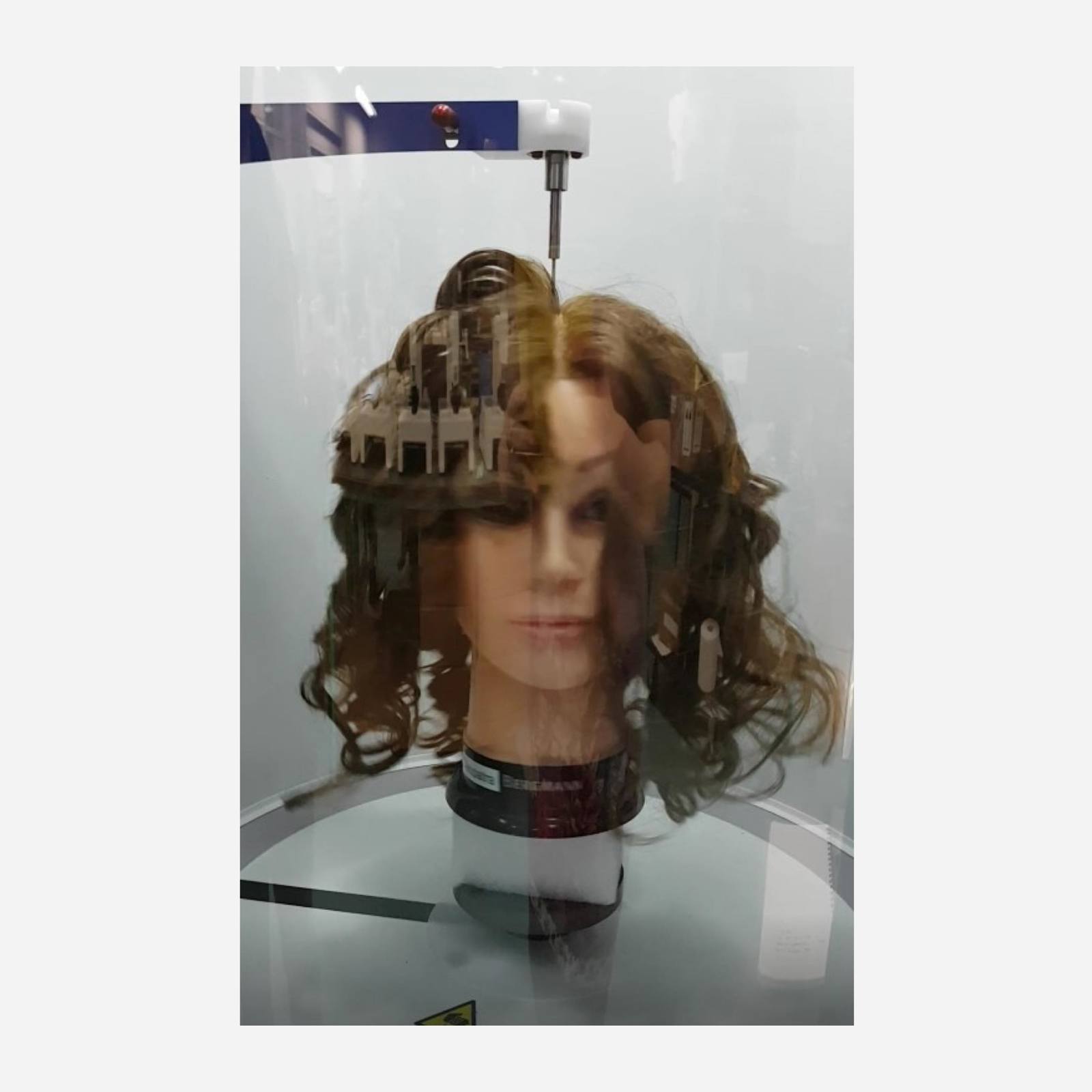 Mannequin hair in Volscan Profiler. Left hand side with a fixative and right hand side without
Mannequin hair in Volscan Profiler. Left hand side with a fixative and right hand side without
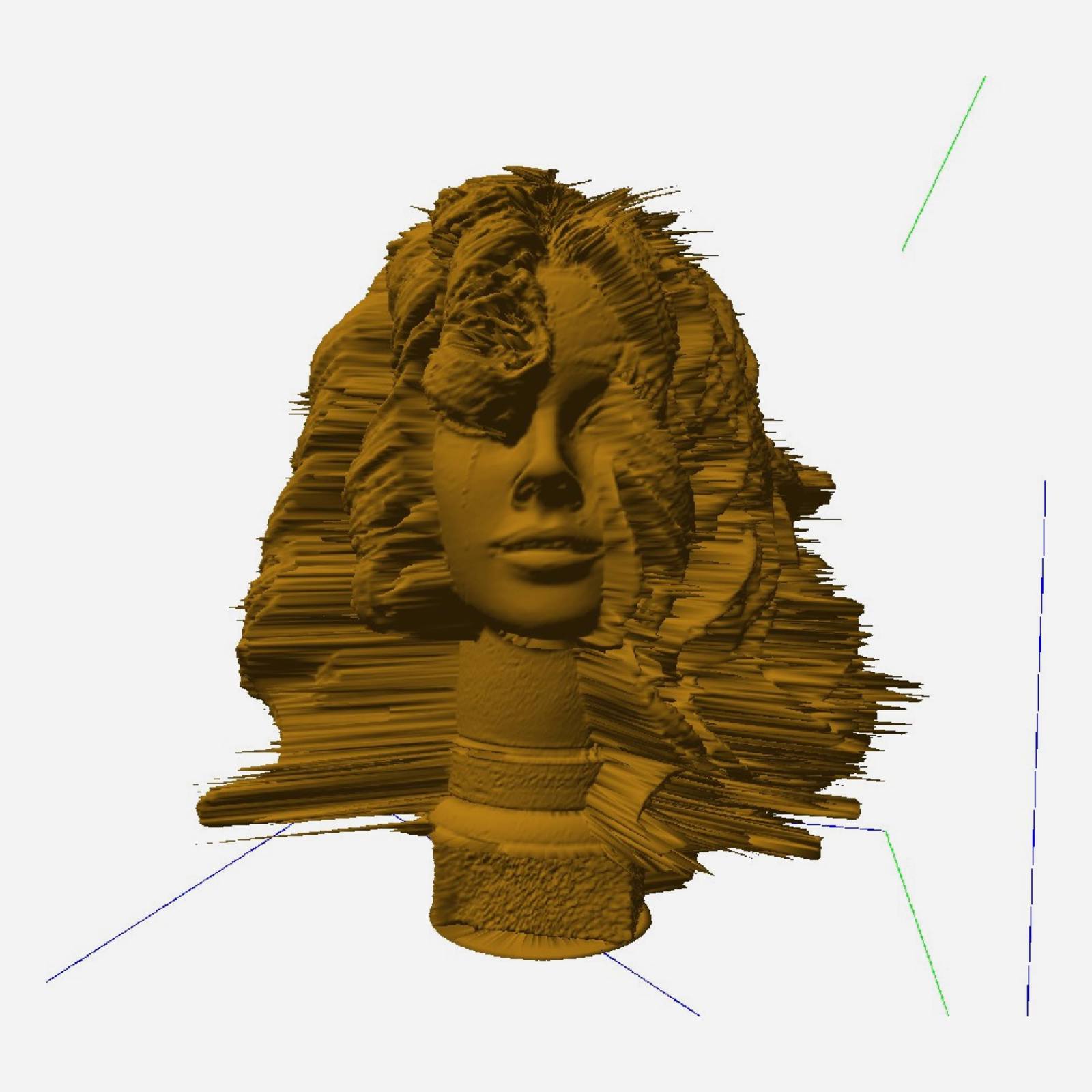 Scan results of mannequin head
Scan results of mannequin head
Left hand side: fixative applied to curls
Crown volume – 1172ml
Crown height – 122.9mm
Crown base – 171mm²
Right hand side: no fixative applied to curls
Crown volume – 988ml
Crown height – 98.8mm
Crown base – 156.8mm²
Traditionally, mannequin heads are very difficult to measure manually, and a compromise must be made between precision and speed. For example, root lift measurements used to be made using Vernier callipers a set distance from the hairline. This is a measurement that will be susceptible to human error and variation between technicians.
The 3D scan can be manipulated in certain ways to allow for the separation of properties from different sections of the head. The recommended mannequin head measure-ments include:
- Whole head measurement (e.g. volume, root lift / crown height and crown base area / lateral volume)
- Analysis of head in two vertical halves (e.g. volume)
- Analysis of crown section of each half (e.g. volume, root lift / crown height and crown base area / lateral volume)
Laser profiling – Curl retention samples
A large portion of the haircare market is dedicated to providing products that will prevent curled hair from drooping throughout the day, under fluctuating stresses or in a particularly humid environment. A common test used to substantiate these claims is the ‘curl retention test’.
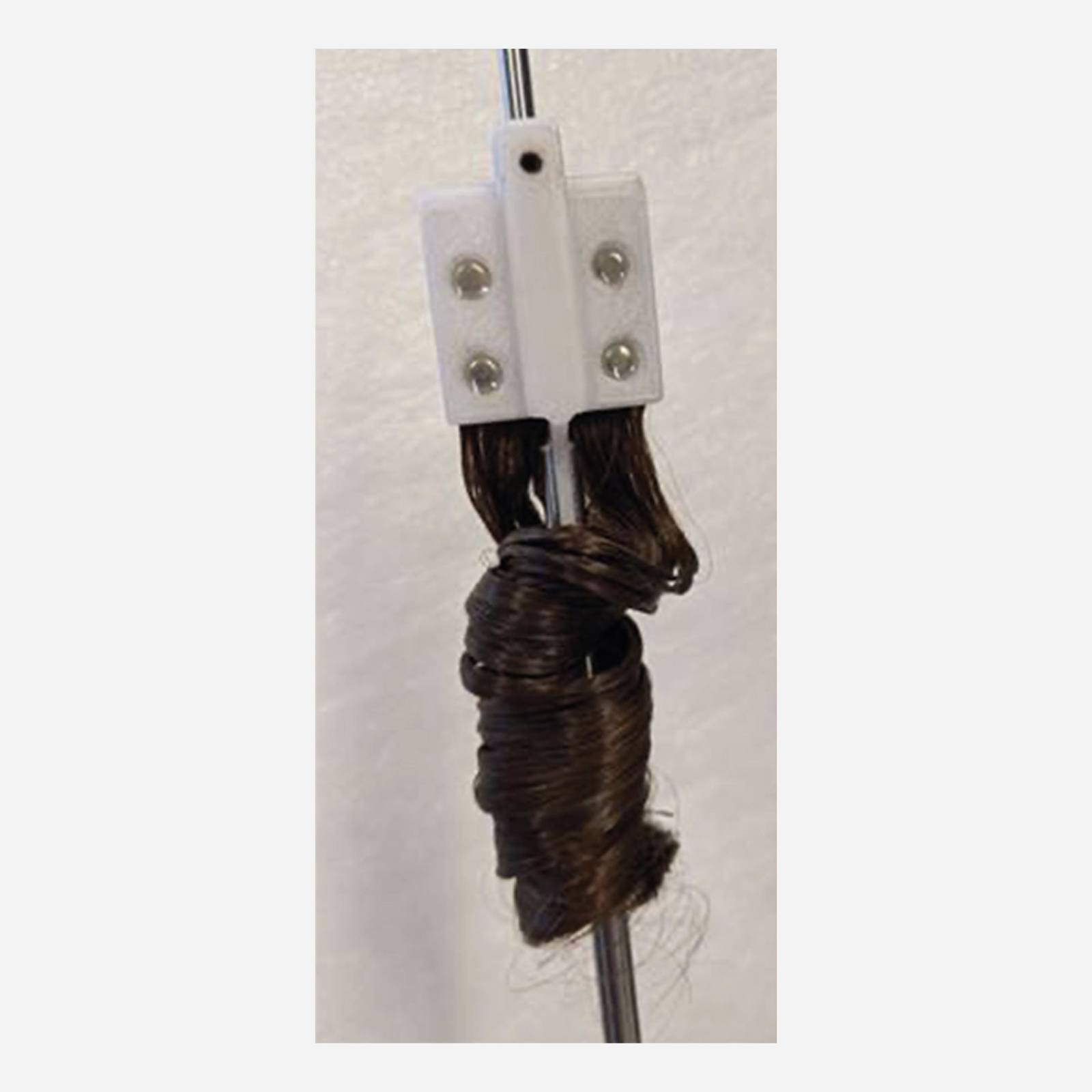 Hair curl sample
Hair curl sample
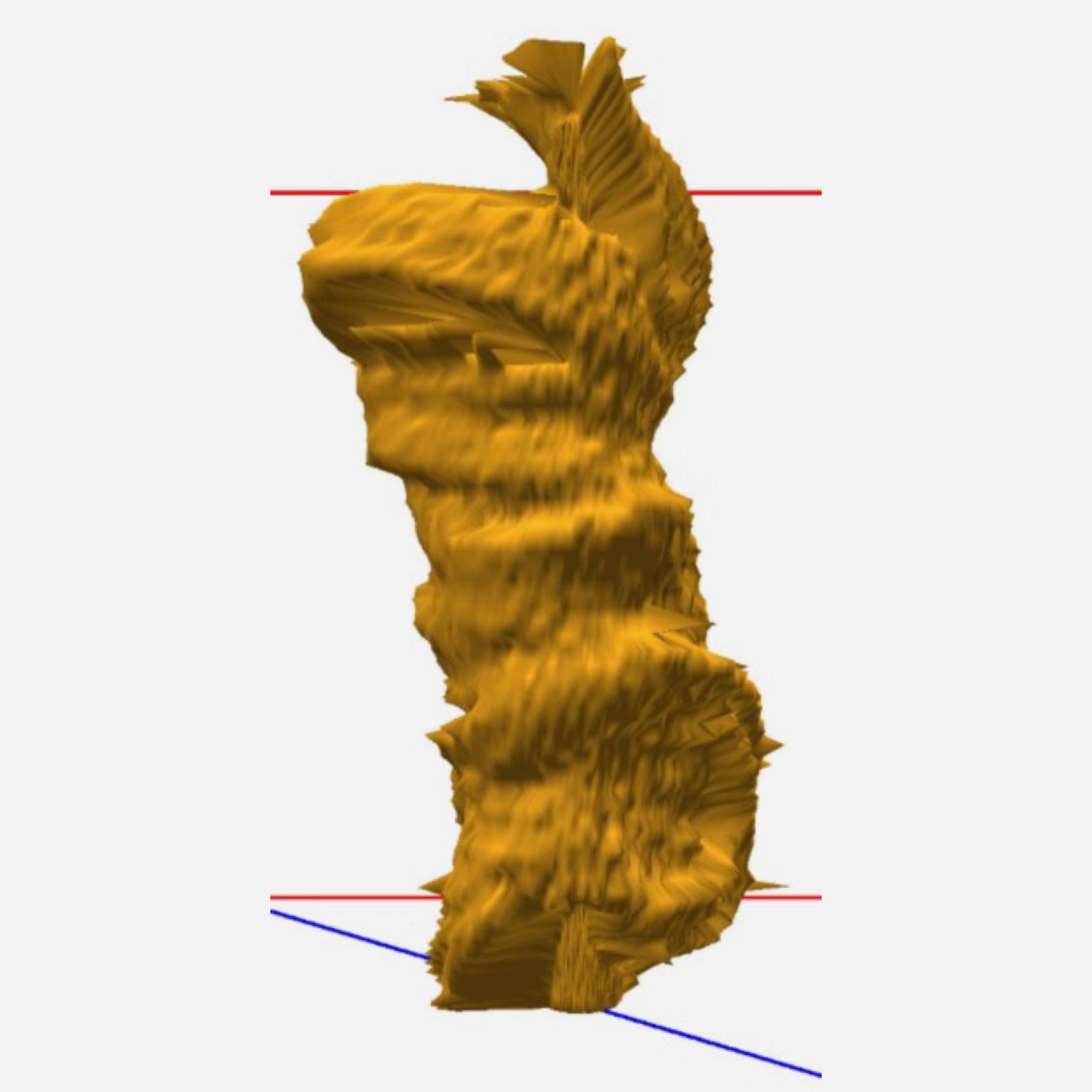 Curl length = 77mm
Curl length = 77mm
In this test, a hair sample is moistened, the fixative under investigation applied, then the curl is rolled around a curler and held in place at a controlled temperature. When it is dry, the tress is removed from the curler and subjected to challenging conditions – for example, it may undergo multiple cycles of extension to a high strain, or placed in a controlled humidity chamber.
The ‘curl retention’ is measured in the form of a percentage length change at set time periods. This measurement is traditionally a manual one, and so prone to human error. However, using a similar attachment setup to the Volscan Profiler hair tress holder, the curl can be fed onto the metal rod and held at the top. Its length is measured from the resulting 3D scan.
When a tress is undergoing high strain cycles as part of this process, they are traditionally applied by hand. A technician stretches the tress a set number of times before the curl measurement. However, this step can be replaced with a much more reliable technique using Tensile Grips and a Texture Analyser, applying exactly the same extension per cycle (unlike the manual process). This removes the uncertainty and error that comes from the traditional manual method.
To display curl retention as a percentage of the original length before humidity or strain were applied; this can be carried out in a Volscan Profiler macro after the scan has been performed.
Conclusions
The research and development behind hair products requires continuous innovation to keep up with trends and account for hair diversity. All products come with claims to hold, shape, colour, condition or add volume to hair, and all these claims must be tested in the laboratory.
A wide range of hair and hair product test methods is built into Exponent Connect Texture Analyser and Volscan Profiler software and will automatically load at the click of a button.

